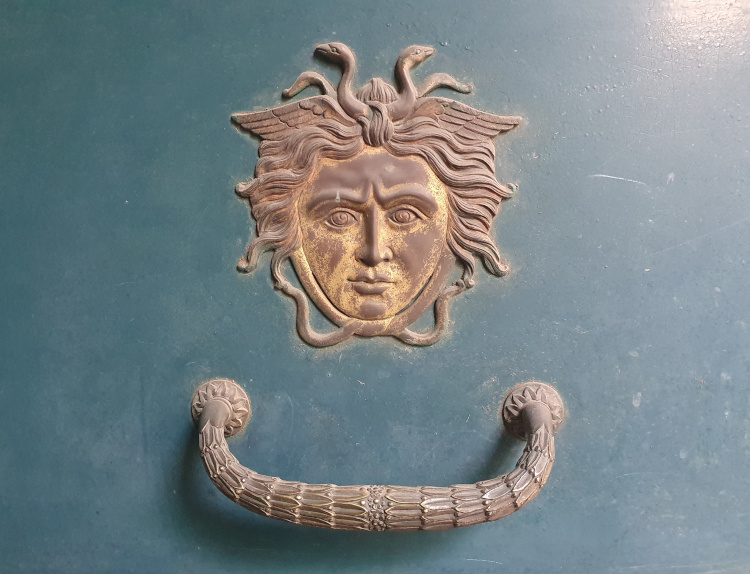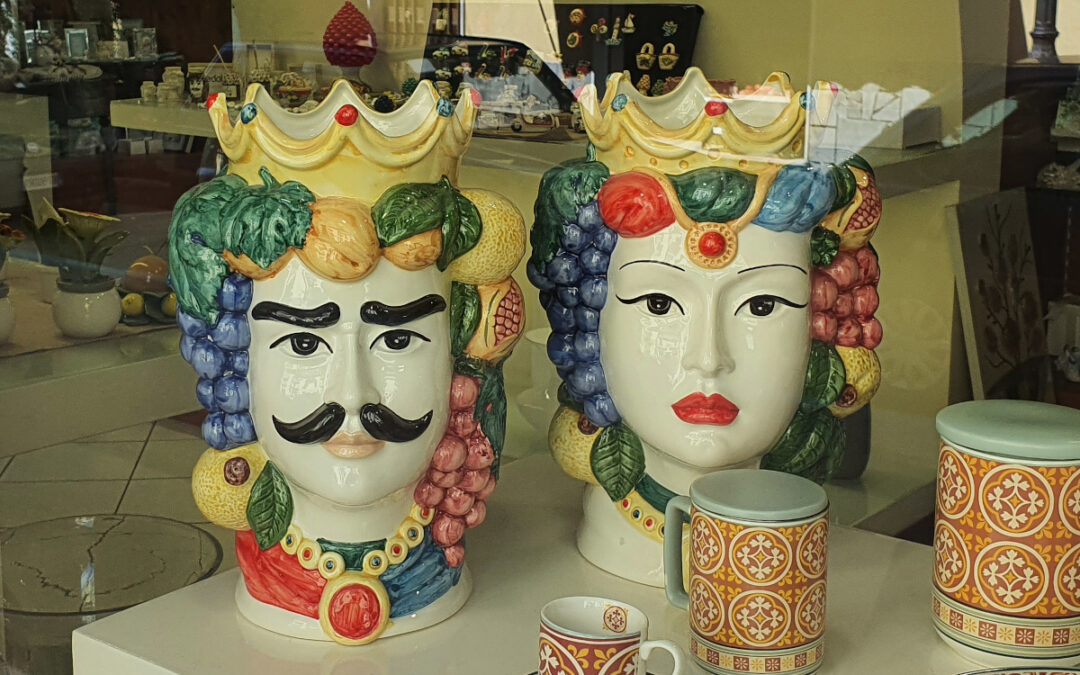Today we would like to introduce you to some symbols that are often found in Sicily. They reflect the rich history of the island, but their meaning and origin are often not obvious at first glance.
Testa di moro (Moorish heads)
Whether as a flower pot or just for decoration, in Sicily you often find two ceramic vessels in the shape of two heads: a man with a beard or moustache and a beautiful woman. The heads are richly decorated with flowers or fruits, they wear turbans and crowns. The man is often of black complexion.
What is it about this couple?
The following legend is told: in the 11th century, a beautiful young woman lived in Palermo. Because of her beauty, her father almost never let her leave the house. So she took care of the flowers and plants in the house every day, her pride and joy.
One day, while she was watering the flowers on the balcony, a young man walked by in the street below the balcony. He was Maure, that is, a man from a Berber tribe of North Africa. At that time, Sicily was under Arab rule.
When he saw the beauty, he immediately fell in love with her, entered the house and confessed his love to her. The young woman was so overwhelmed by these exuberant feelings that she also fell in love and entered into a secret relationship with the man.
However, the man forgot to mention that his wife and children were waiting for him in his home country and that he would soon return to them. When the young woman found out, she waited until night until her lover was asleep and killed him.
She cut off his head and made a flower pot out of it, planted basil in it and put it on the balcony. This way, her beloved would never leave her again and always stay with her.
The basil grew so well in this pot that the inhabitants of their neighbourhood became jealous. So that they could also get such beautiful basil, they had the potters make flower pots in the shape of a Moor’s head.
Whether this worked, and also the further fate of the young woman, is unfortunately not known.
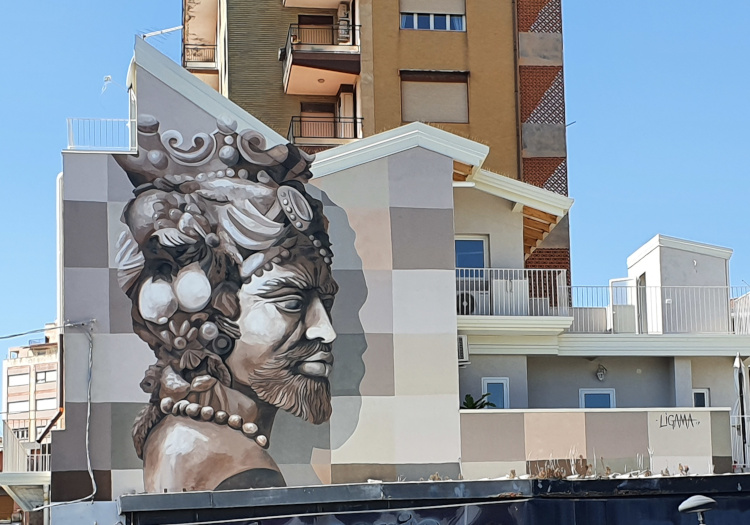
A graffito in Catania shows the Moor’s head
Another version of the story says that the young woman came from a noble family. A relationship between a noblewoman and a Moor was considered inappropriate. When the young woman’s father discovered the secret love affair, he killed both of them and had their chopped-off heads displayed in public. As a warning against entering into such a relationship.
This could explain why both heads are always placed together.
Such cruel stories are long gone. Today, the two heads are a symbol of Sicily and Sicilian craftsmanship.
Pine cones (pigna)
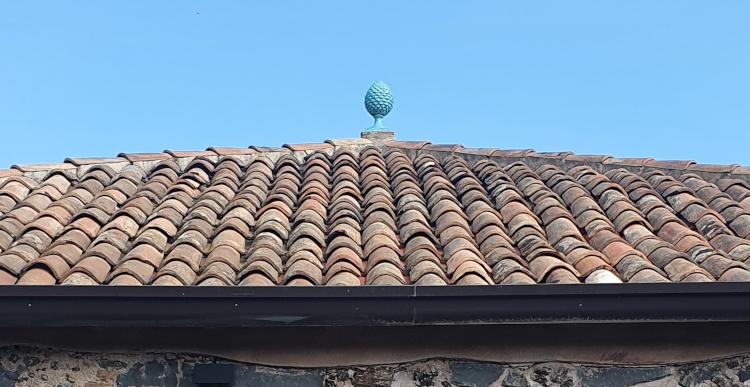
Ceramic pine cones are often seen in Sicily on balconies, walls or next to gates.
The pine, as an evergreen tree, stands for health, vitality and constant renewal and is also associated with the divine, eternity or immortality.
The pine cone with its hundreds of seeds stands for fertility and prosperity. Traditionally, a ceramic pine cone is given to young couples as a wedding present.
Nowadays, however, the lucky charm is also a welcome gift on other occasions and certainly a nice souvenir from Sicily.
Elephant
Catania has an elephant in its coat of arms and an elephant made of Etna’s lava rock stands in a fountain in the cathedral square. We have already told you the story of the fountain and the stone elephant in another article.
But there is also an old legend about how Catania got its elephant: when the site of today’s Catania was first settled, many wild, dangerous animals lived there. An elephant is said to have put them to flight and the inhabitants of the time erected a statue of the elephant in gratitude.
According to other speculations, the elephant figure was erected during the time of Byzantine rule as protection against Etna. At least for a while this worked, but in 1669 Catania was almost completely destroyed by lava flows from a lateral eruption of Etna.
Turtle
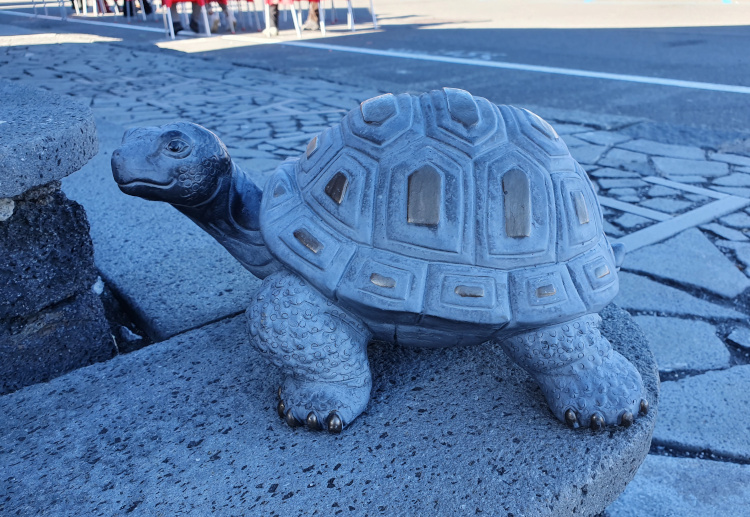
The turtle is also considered a lucky charm and is said to bring a long and peaceful life. It is important that the turtle, when placed outside the house, faces the house. In this way, it shows luck the way towards the house.
Trinacria & Medusa Head
The Trinacria – the Medusa head with 3 legs – is found on the Sicilian flag and is also a widespread good luck charm. We have already told you about it in detail (The flag of Sicily).
The Medusa head itself is also found as a good luck charm and to ward off all evil in many places, such as on doors, as the following photo shows.
